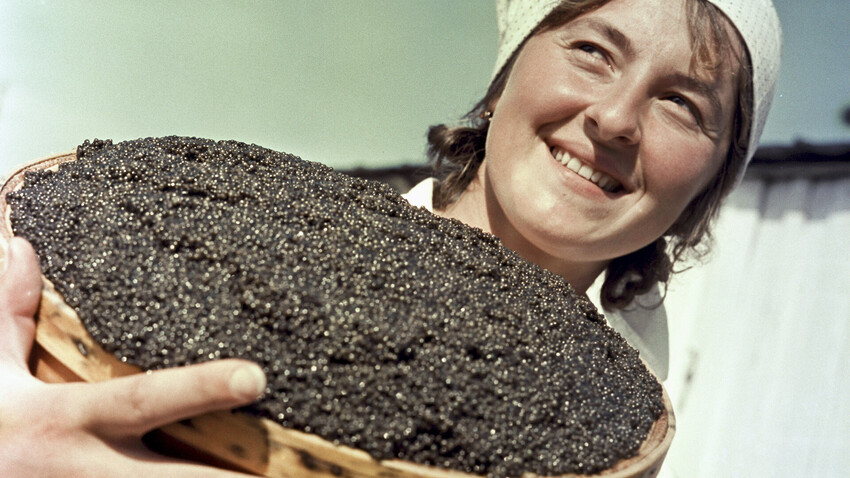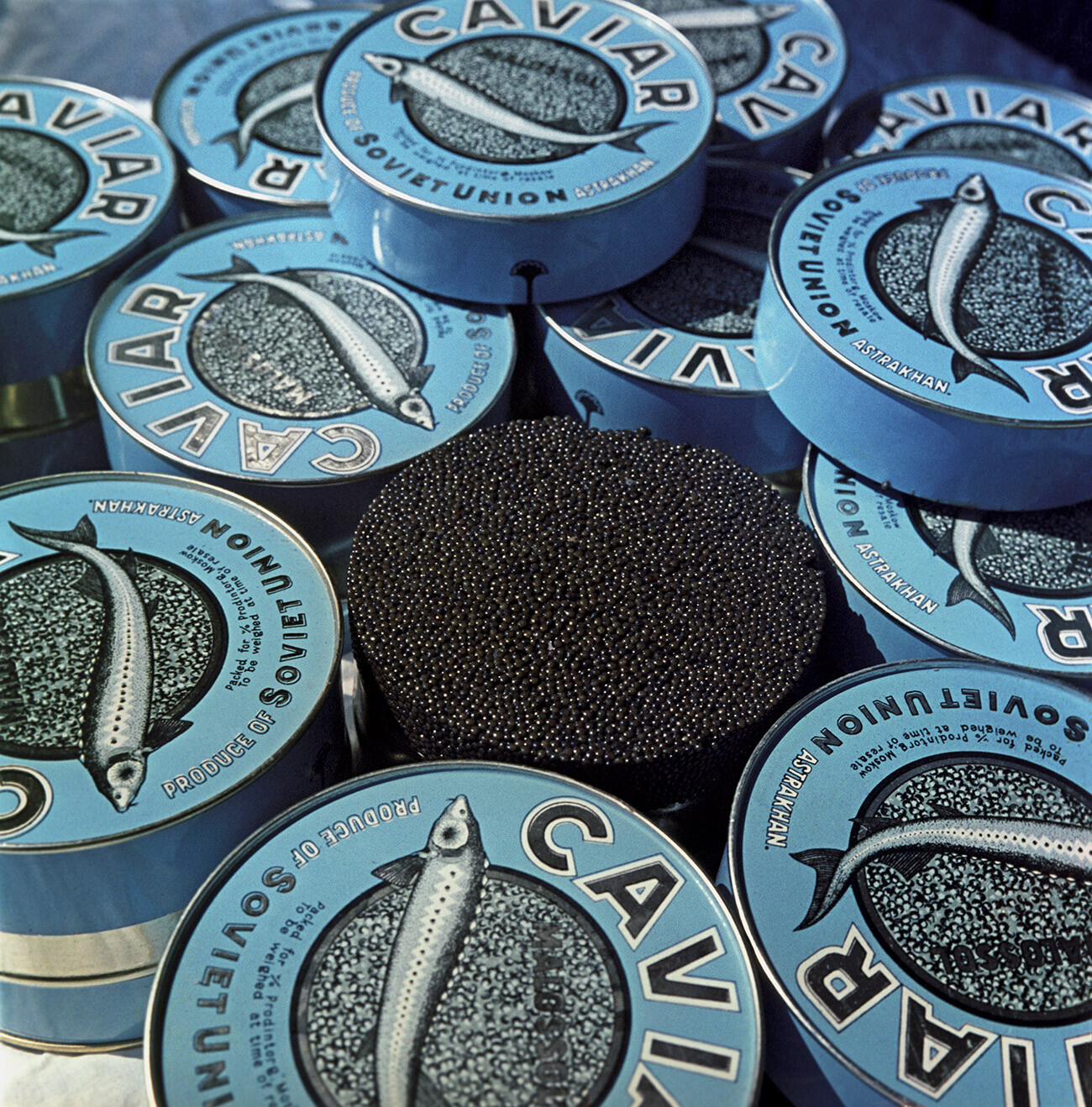
Today, black caviar is considered an expensive delicacy that few can afford. In the famous Soviet movie “White Sun of the Desert” (1969) by Vladimir Motyl the main character forced himself to eat black caviar with a tablespoon from a large bowl. He even complained that he couldn’t eat this “damned” caviar every day; that’s how sick he was of it. The plot of the movie took place on the shores of the Caspian Sea, where 90% of all black caviar in the USSR was harvested.

“White Sun of the Desert” (1969) by Vladimir Motyl.
Film studios "Lenfilm", "Mosfilm", Experimental creative associationThe main point is not the proximity to the place of caviar harvesting, but rather the fact that from the mid 1920s right until the beginning of the 1980s black caviar was in abundance in the USSR as the sturgeon population increased. At the end of 1929 the USSR exported approximately 800 tons of black caviar, earning $1 billion in hard currency in today’s terms. Black caviar was listed as one of the ten key Soviet exports.

The average Soviet person could buy a jar of black caviar without seriously impacting their family budget; and it wasn’t a small jar. Caviar was sold at stores in bulk, and many former Soviet citizens remember three-liter jars of black caviar that their parents brought home.
Soviet pediatricians recommended young children to eat caviar in order to prevent anemia, because it was a valuable source of iron and other important minerals needed for good health. During World War II and after the war, black caviar was included in the food rations for submarine crews, pilots, and polar explorers.

Caspian сaviar production association.
Ivan Zaharchenko/SputnikThe price of black caviar in Soviet times was quite affordable. In the 1950s it cost only twice as much as red caviar. At the end of the 1970s a small jar of black caviar cost 4.5 rubles – about the same as a bottle of vodka.
Caviar abundance, however, ended in the 1980s. This was due to a number of factors: Poaching; a decrease in the number of sturgeon fish; and the subsequent government fishing ban made it practically unattainable for the majority of Russians.
Dear readers,
Our website and social media accounts are under threat of being restricted or banned, due to the current circumstances. So, to keep up with our latest content, simply do the following:
Subscribe to our Telegram channels: Russia Beyond and The Russian Kitchen
Subscribe to our weekly email newsletter
Enable push notifications on our website
Install a VPN service on your computer and/or phone to have access to our website, even if it is blocked in your country
If using any of Russia Beyond's content, partly or in full, always provide an active hyperlink to the original material.
Subscribe
to our newsletter!
Get the week's best stories straight to your inbox